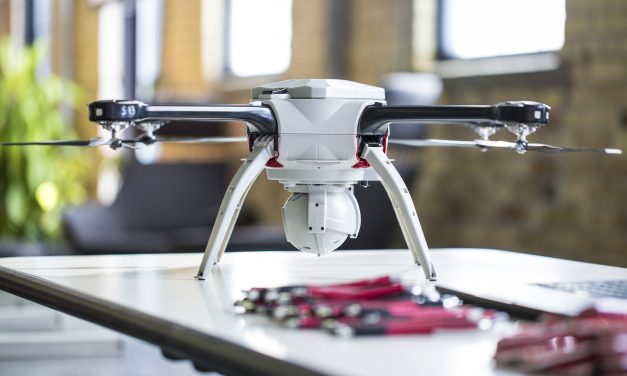For eight years, drones made by Waterloo’s Aeryon Labs have carried thermal imaging cameras and sensors made by FLIR Systems, a US$6 billion market cap company headquartered in Wilsonville, Ore.
Starting today, they’ll do so as part of the same company.
Aeryon has been acquired by FLIR for US$200 million, the companies announced Monday, a development co-founder and CTO Dave Kroetsch described as “huge.
“Our 12-year anniversary will be Saturday,” said Kroetsch. “It’s been quite the journey.
“We thought we’d grow to 50 people and there would be an exit in that time frame. We brought this further and bigger than we’ve ever imagined. I don’t think we could even fathom where we are today.”
Aeryon was founded in Kroetsch’s garage in 2007. He recalled yesterday that its first office was in his living room, which had been divided into cubicles.
Today, Aeryon has some 220 employees, and has carved out a reputation as a maker of rugged, mission-focused, high-end unmanned aerial vehicles. Its products are used around the world by civilian agencies, fire departments, militaries and police forces, including the Waterloo Regional Police Service.
Kroetsch, who stepped down as Aeryon CEO in 2017, giving way to Bill McHale, said operations at the Waterloo office will continue as usual, adding that his precise role and title have yet to be determined.
“We’ll definitely see a little bit of change on the leadership side of things,” said Kroetsch. “My role has shifted personally in the last little while. I’ll continue in that technology-focused strategy role. Those who are in the day-to-day operation leadership continue in their roles.”
And Aeryon, he said, now becomes part of FLIR’s government and defence business unit. FLIR has 3,700 employees and already produces smaller UAVs. Aeryon’s products are generally larger and more robust, capable of different missions.

An Aeryon Labs unmanned aerial vehicle. (Communitech photo: Sara Jalali)
“The acquisition of Aeryon Labs reinforces our long-term strategy to move beyond providing sensors to the development of complete solutions that save lives and livelihoods,” said Jim Cannon, President and CEO of FLIR Systems.
“This acquisition, coupled with our acquisition of Prox Dynamics in 2016, greatly increases our unmanned systems solutions capabilities.”
Aeryon in November of 2016 opened a $3-million testing facility in Waterloo, and did so on the heels of a US$45.9-million investment a year earlier by U.S.-based Summit Partners. It went through a round of layoffs some 18 months ago, a response, Kroetsch said, to the emergence of cheap, mass-produced recreational drones, adding the company has since recovered.
“We stuck to our guns, refound our niche and went through some changes, but we’re larger than we’ve ever been at this point,” said Kroetsch.
“People like to idealize the growth of a company as a linear path from A to B and of course it’s never that. A company changes direction as internal circumstances and market circumstances evolve. We saw the market change with the influx or recreational drones, as they were becoming more professionalized and price points changed. So, of course, the company needs to move and as you revector, you make changes to course.
“Fundamentally, the goal of building a product we could sell internationally, focused at the high end of the market, hasn’t changed from the outset.”
The long partnership with FLIR, Kroetsch said, meant that the blending of the two companies was a logical development.
“With FLIR, they’ve been a vendor of ours. Working with them in that context made them familiar with Aeryon, who we are, what we do, and they’ve sort of broadened their mandate – from being a sensor supplier to being part of the broader solution. A platform like ours that carries around their sensors is a perfect next step for them.”
Kroetsch addressed what he described as “the stigma” in Canada that is often associated with an exit to a U.S. firm, saying he believes the acquisition will benefit the local technology ecosystem.
“I think it means a lot [to the region]. Sometimes I think it might be frowned upon for Canadian companies to go through exits. But certainly in this case, it’s opportunities all around.
“We’re bringing a company to the region that I think is at about a US$6-billion market cap and nearly US$2 billion of revenue. To bring a major player like that to town is huge.
“Everything from bringing the stability of that large employer to the region and the backing they bring, I think, is really important – as well as that virtuous circle that can now propel the local investment community.”

